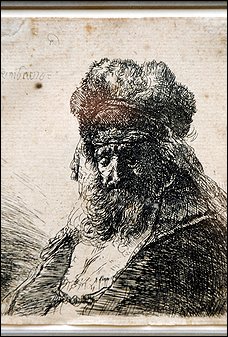A blog at the New York Times takes note of a cultural curiosity, as the most secular of American cities (though named for a saint) still manages once in a while to show a strain of Catholic fervor:
There was no neutral zone for mere spectators. On one side were thousands decked in green, representing the Fighting Irish of Sacred Heart Cathedral Preparatory. Across the basketball court were an equal number in red and blue for the Wildcats of St. Ignatius College Preparatory.
On Tuesday night, a sellout crowd of 4,500 packed War Memorial Gymnasium at the University of San Francisco for what bills itself as the oldest sports rivalry in the West, started in 1893. The announcer noted they were gathered for “a great tradition in the City of St. Francis.”
It is rare these days to hear the city referred to by its namesake patron saint. These parochial high schools’ sports rivalry is a treasured relic of sorts: one of the few large public displays of Catholicism remaining in San Francisco.
What was once the region’s most influential religion is now comparatively invisible in America’s most secular city.
In the 1950s, half of the city’s population was Roman Catholic, according to the Archdiocese of San Francisco. The figure now is 20 percent. A decade-old survey by Harvard University showed that only 17 percent of San Franciscans said they attended church regularly, the lowest rate among urban regions in the nation.
“Of course we want to witness to the whole world,” Archbishop George H. Niederauer said, “but it isn’t ultimately a question of numbers and percentages. It is, you know, the quality of the faith life and of the spirituality.”
The University of San Francisco’s president, the Rev. Stephen A. Privett, spoke of the waning political influence of the archdiocese, saying, “There is no solid Catholic block anymore.”
The smaller number of Catholics only partly explains the church’s loss of visibility. In a city where intolerance is otherwise vilified, it has become socially awkward to profess devotion to any mainstream faith. While mentions of spirituality, meditation and yoga pass without comment, those who follow organized religions face, at minimum, a Berkeley eye roll.
It is hard to avoid this feeling.
When a friend said she attended Mass every Saturday night, it was the only time in 13 years living in the Bay Area that I had heard that. Later, she admitted she rarely shared that part of her life because she was concerned about the reaction. Mass? How odd. That is not how my friends in New England think.
Check out the rest at the Times link.

